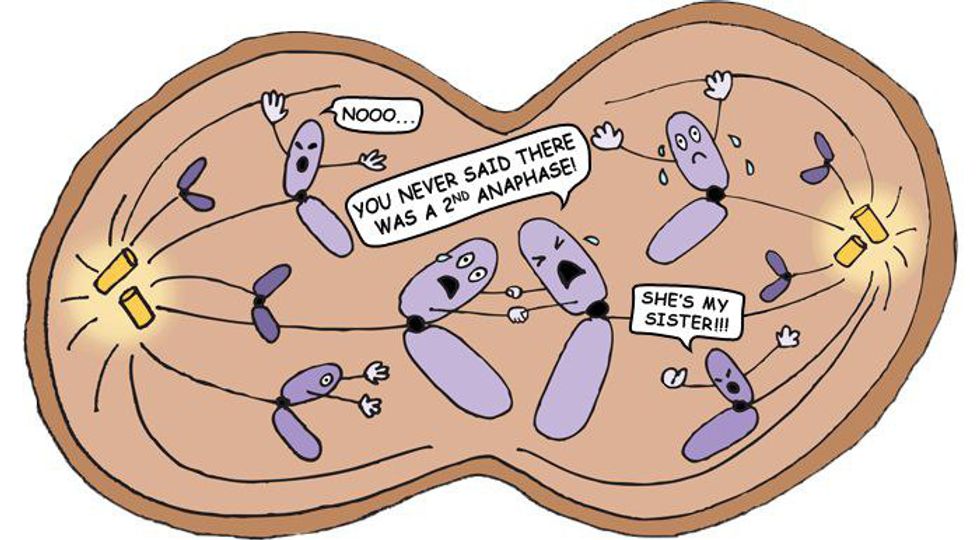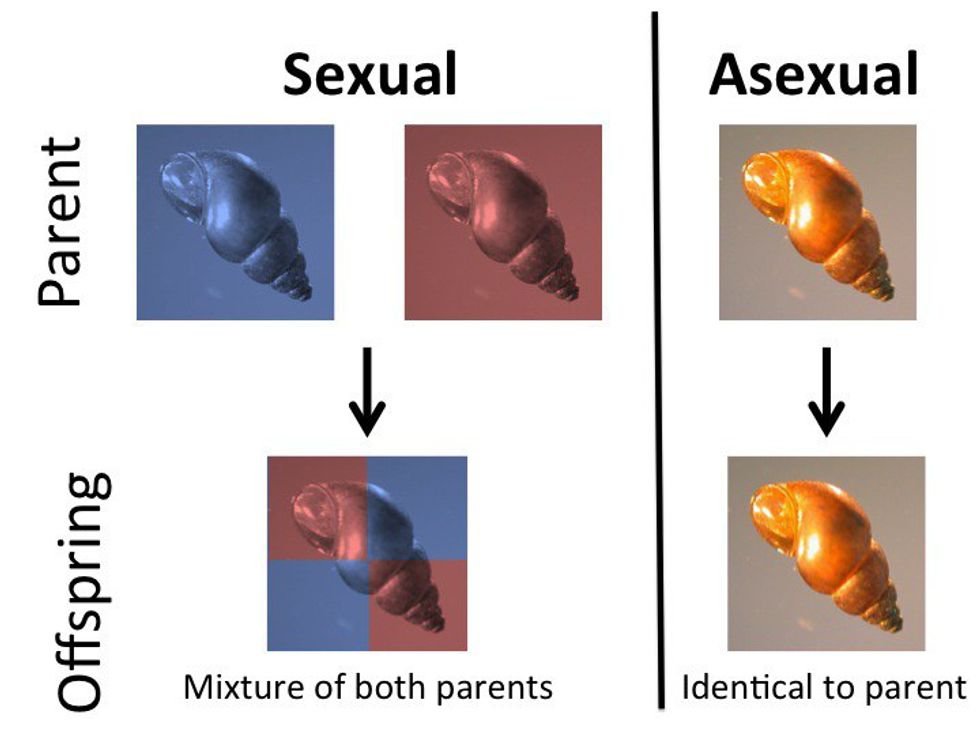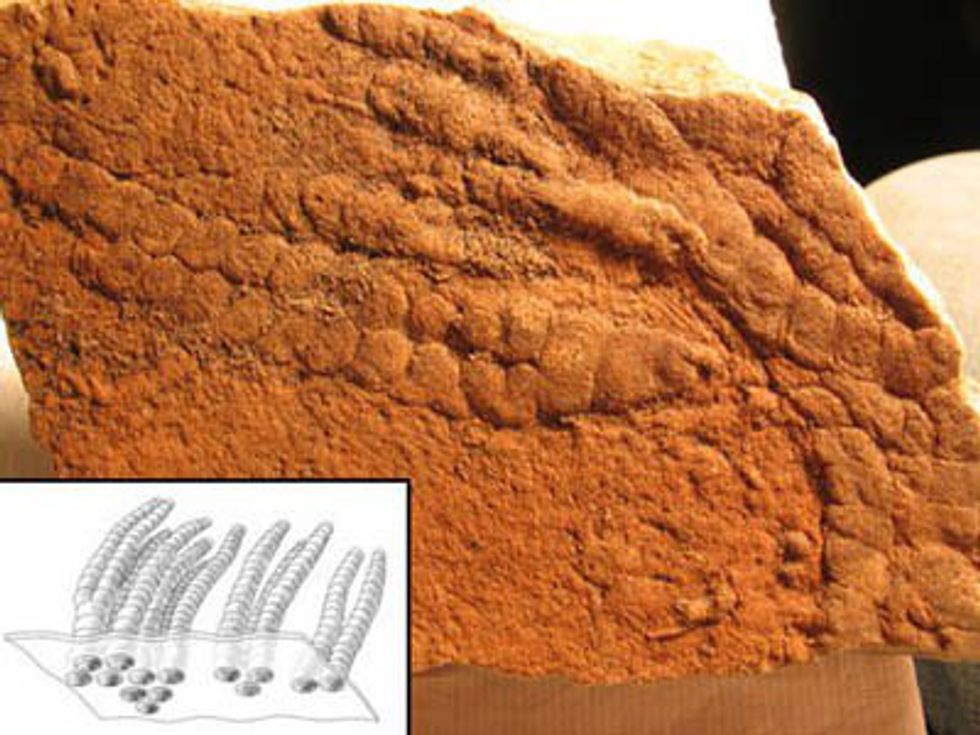The word "bang," in relevance to sex, didn't start out from just anywhere. It actually began with the first sexually reproducing multi-cellular organism known as Bangiomorpha. I guess you can say it was the first sex joke in history -- either that or I am a bit immature. According to Nicholas J. Butterfield's article "Bangiomorha pubscens n. gen., n. sp.: implications for the evolution of sex, multicellularity, and the Mesoproterozoic/ Neoproterozoic radiation of eukaryotes" in GeoScience World, these multi-cellular organisms are identified as bangiacean red algae based on their cell-division patterns.
Fun, right? Now, cell division is a far more complex process than we may think. We can't just take a knife right down our cells as if we were cutting an apple and say "wala" they are divided. First of all, our cells are microscopic so they are far too small to see and conduct that process. Sorry to disappoint you pre-med students out there. And second of all, they must require a far more complex process than that to be sexually reproducing.
Student: So what you are saying, right, is that Bangiomorpha are the first sexually reproducing organisms?
Writer who is pretending to be a teacher: That is quite right what I am saying. With a more complete fossil record of other Proterozoic eukaryotes, Bangiomorpha fossils mark the beginning of other major protistan radiation near the Mesoproterozoic/ Neoproterozoic era.
Student: But what are the indications that they are sexually reproducing?

If you have taken an introduction to biology class, you should be familiar with the fact that cells divide to create a total of four daughter cells in the process called meiosis. Meiosis is the process of creating sexually reproducing cells. The first sign of this just happens to be Bangiomorpha.

Eukaryotes are what made sexual reproduction possible; Bangiomorpha seems to be the first sign of this. Sexual reproduction is critical for life to exist; for species to continue to exist. For early life in particular, sex was not as much critical for genetic recombination, but to create complex multicellularity. Science is another form of innovation. It is a way of making our world more evolved.







 Photo by
Photo by  person holding black smartphone on white textile
Photo by
person holding black smartphone on white textile
Photo by  StableDiffusion
StableDiffusion
 Photo by
Photo by  Photo by
Photo by 
 roommate as a therapist
StableDiffusion
roommate as a therapist
StableDiffusion
 woman in white shirt eating pizza
Photo by
woman in white shirt eating pizza
Photo by  person holding remote pointing at TV
Photo by
person holding remote pointing at TV
Photo by  person holding assorted clothes in wooden hanger
Photo by
person holding assorted clothes in wooden hanger
Photo by  a couple of
a couple of  friends cleaning apartment
StableDiffusion
friends cleaning apartment
StableDiffusion
 man driving car during golden hour
Photo by
man driving car during golden hour
Photo by  bacon strips and melted cheese topped fries on oval white and blue platter with gray stainless steel forks
Photo by
bacon strips and melted cheese topped fries on oval white and blue platter with gray stainless steel forks
Photo by  selective focus photography of eyeshadow palette
Photo by
selective focus photography of eyeshadow palette
Photo by  brown wooden framed white padded chair in between green indoor leaf plants inside bedroom
Photo by
brown wooden framed white padded chair in between green indoor leaf plants inside bedroom
Photo by  women forming
women forming  taking
taking  man in red polo shirt pouring wine on clear wine glass
Photo by
man in red polo shirt pouring wine on clear wine glass
Photo by  woman in black jacket standing on road during daytime
Photo by
woman in black jacket standing on road during daytime
Photo by 
 StableDiffusion
StableDiffusion
 StableDiffusion
StableDiffusion
 student thinking i shouldnt have procrastinated all semester
StableDiffusion
student thinking i shouldnt have procrastinated all semester
StableDiffusion
 Photo by
Photo by  Photo by
Photo by  Photo by
Photo by  StableDiffusion
StableDiffusion
 StableDiffusion
StableDiffusion
 Photo by
Photo by  Photo by
Photo by 


 Lumiere figure at the Disney Store at the Ala Moana Shoppi… | Flickr
Lumiere figure at the Disney Store at the Ala Moana Shoppi… | Flickr
















